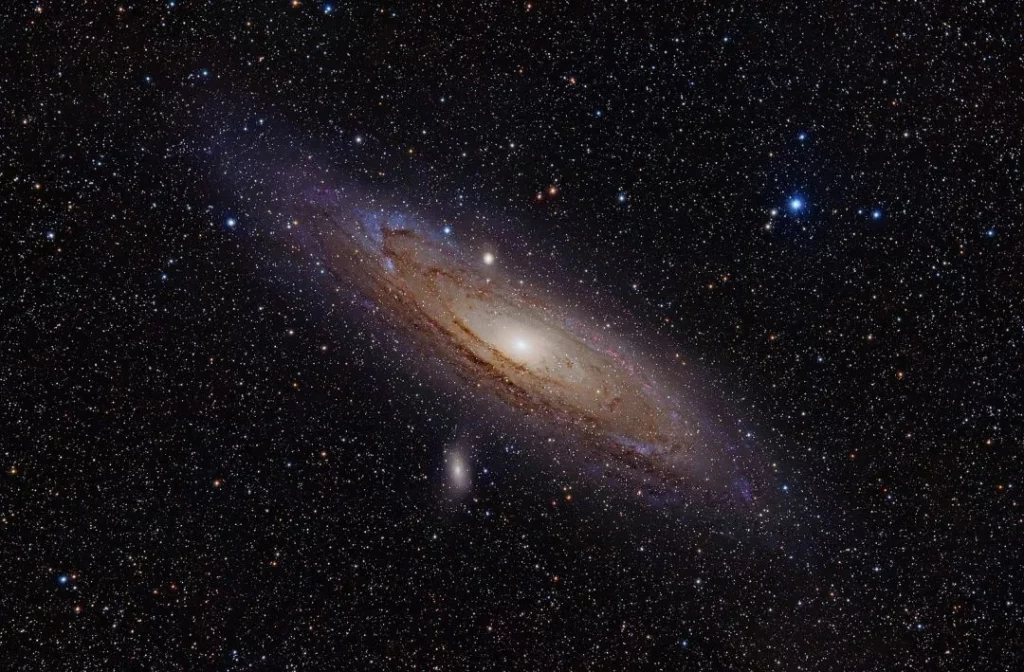Understanding the intricacies of our own Milky Way galaxy has been a challenge for astronomers. The vastness of space makes it unrealistic to send probes outside the Milky Way to observe its entirety. However, scientists have found alternative methods to study our galaxy indirectly and gain valuable insights into its structure and evolution. One approach is to observe similar galaxies around us. According to the principles of cosmology, the universe is uniform and isotropic, implying that celestial bodies like stars and galaxies are not unique if placed within the broader universe. By studying other galaxies that share similarities with the Milky Way, astronomers can build models that capture the evolution process of our galaxy.
Observing the Andromeda Galaxy can help us understand the Milky Way
In this pursuit, the Andromeda Galaxy (M31) plays a significant role. It resides in the local group of galaxies, close to the Milky Way, and bears a striking resemblance to our galaxy. The overall outline and internal spiral structure of the Andromeda Galaxy mirror those of the Milky Way. Recent discoveries even suggest that it has a bar-shaped core, indicating a possible similarity in being a barred spiral galaxy like our own.

Furthermore, the outer halo of the Andromeda Galaxy, with its metal-poor “old” stars, shares similarities with the Milky Way. This suggests a comparable evolutionary process where both galaxies gradually grew to their present scale by incorporating numerous surrounding dwarf galaxies over billions of years.
In addition to the Andromeda Galaxy, astronomers have also caught a glimpse of the “Milky Way” in its early stages. Images captured by the Webb telescope depict a distant galaxy with a redshift of 1.378, viewed approximately 4 billion years after the Big Bang. The galaxy appears elongated, surrounded by bright spots, which are actually ancient globular star clusters comprised of millions of stars. This galaxy has been aptly named “sparks” due to the dazzling fireworks-like display created by these star clusters.
Through the analysis of metal elements and evolution models, astronomers have inferred that this galaxy, referred to as the Spark Galaxy, bears a strong resemblance to the Milky Way during its infancy. At that time, it only constituted 3% of the mass of today’s Milky Way and was actively assimilating surrounding satellite galaxies and globular clusters. It is estimated that in another 9 to 10 billion years, it will reach the mass of today’s Milky Way.
This “young mirror image” of the Milky Way provides a treasure trove of information for astronomers, aiding in the study of our galaxy’s evolution. It offers a rare glimpse into the appearance and behavior of the Milky Way during its early years, which were previously only theoretical. One intriguing puzzle it helps address is the origin of globular clusters. By studying the globular clusters in the Spark Galaxy, scientists can gain insights into their age and formation, shedding light on the mysteries surrounding these clusters in the Milky Way.
It is currently believed that both globular clusters and early galaxies originated from primordial gas clouds, such as high-density neutral hydrogen clouds, in the universe. While galaxies are more complex in composition, star clusters are relatively simpler. This explains why some globular clusters contain older stars than the galaxies they reside in.
RELATED:
- James Webb Space Telescope Detects Water around a Main-belt Comet
- Google’s AI Chatbot Bard Causes $100 Billion Loss with Wrong James Webb Answer
- Best Mid-Range Smartphones of 2023 – OPPO, Moto, Samsung & More
(Via)







